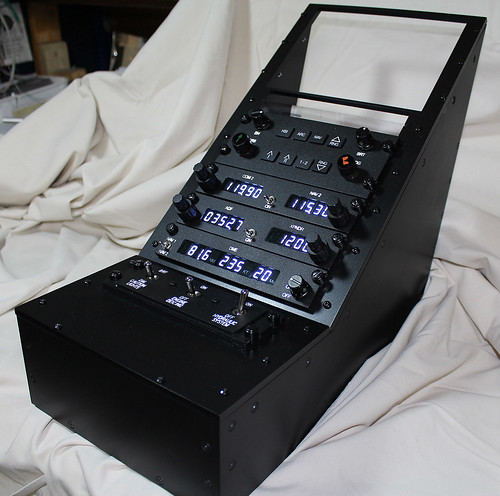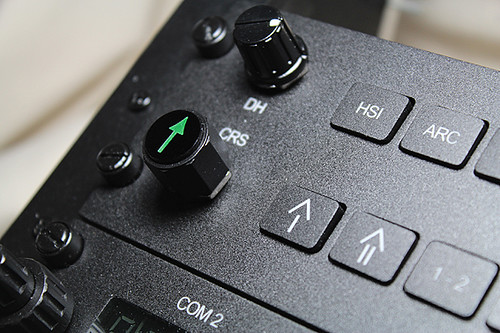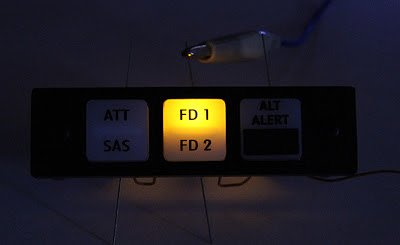For the past few months we've been selling a bezel complete with buttons and encoders (see the first two photographs), which is based around the Aspen EFD1000. It was designed to fit in front of an LCD monitor upon which the appropriate graphics were shown, with our PCB interfaced to its software, thus making the unit operational.
Below is a short video on our Youtube account demonstrating its functionality using the Flight1 Aspen software. It it also able to use the Aspen EFD1000 software from Friendly Panels.
This product has recently undergone something of a facelift, however, and has since been significantly upgraded and taken to a much more realistic level, having now evolved into the Ruscool LCD1000; a stand-alone unit complete with its own LCD screen.
As seen from the shot above, with the ability to now fit the unit actually into a panel as would properly occur in an aircraft, the thickness of the panel is much reduced. Similarly, with the LCD display unit now embedded deep into the panel itself, there is a substantially more realistic and aesthetically pleasing result with regards to the distance from the panel's surface to the graphics.
Jumping out at everybody - I'm sure - is the fact that the display isn't actually displaying anything! Rest assured that this is simply a logistical issue at present, due to some temporary relocations of computers and monitors about our workshop, and shall be remedied as soon as possible so that we can update matters with a proper video and some more details. It still uses the Flight 1 Aspen software, or the Friendly Panels Aspen software.
In the meantime, and going right back to the earliest origins of this product, below are some shots from a few months back that some might consider interesting: our first operational prototype of the 'bezel only' version ...
































.jpg)
.jpg)
.jpg)
.jpg)

.jpg)




.jpg)

.jpg)
.jpg)
.jpg)




